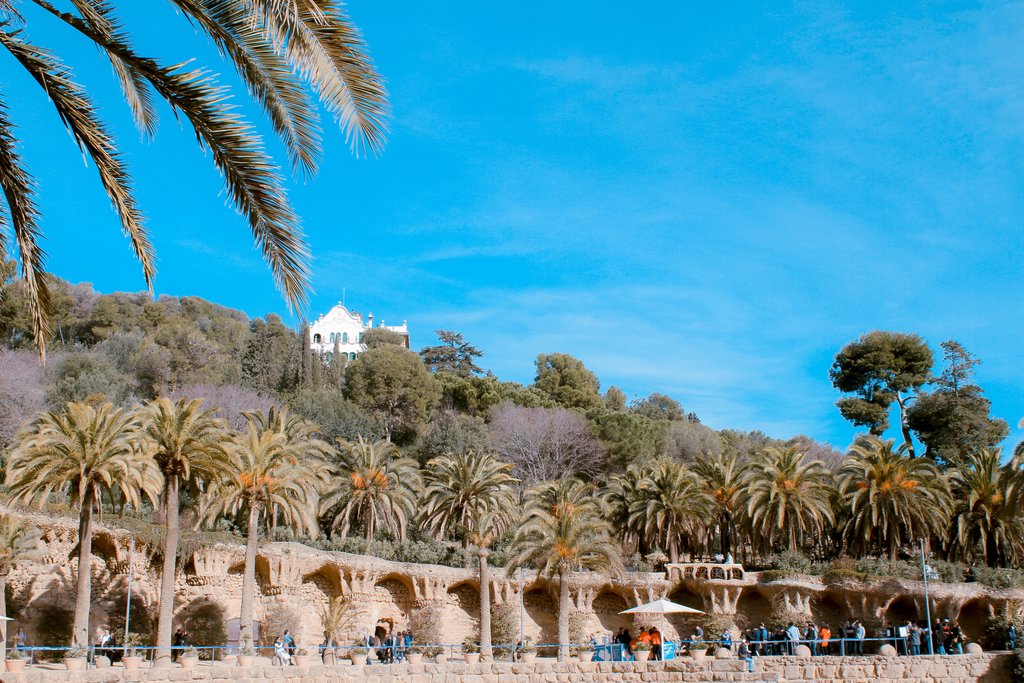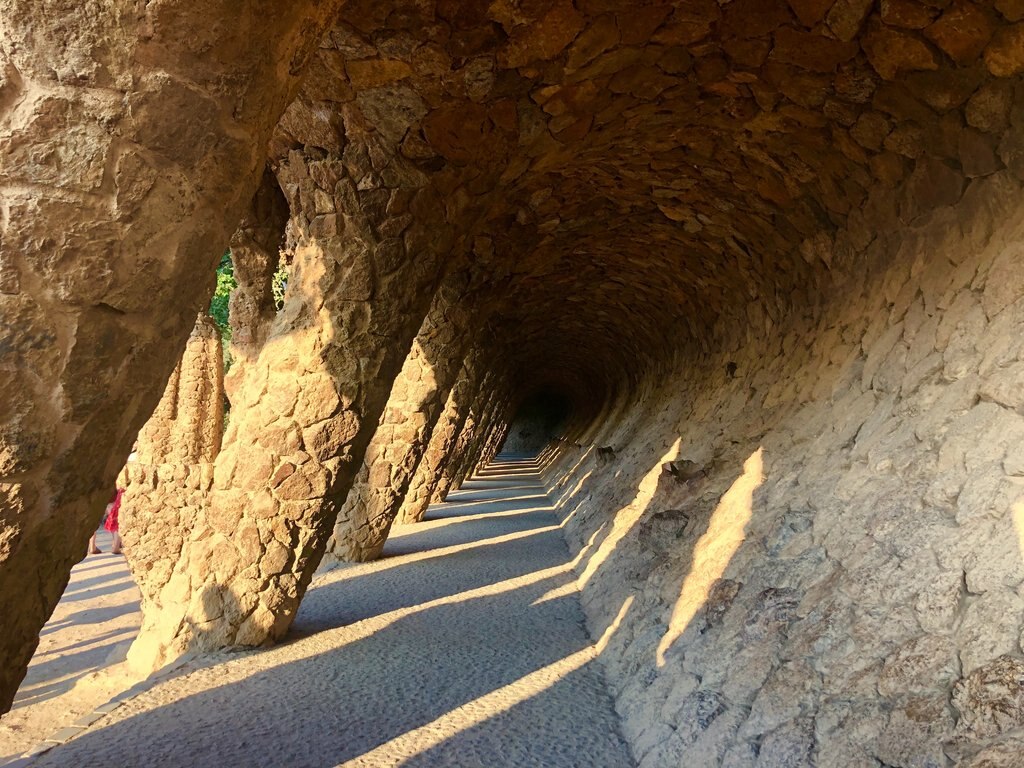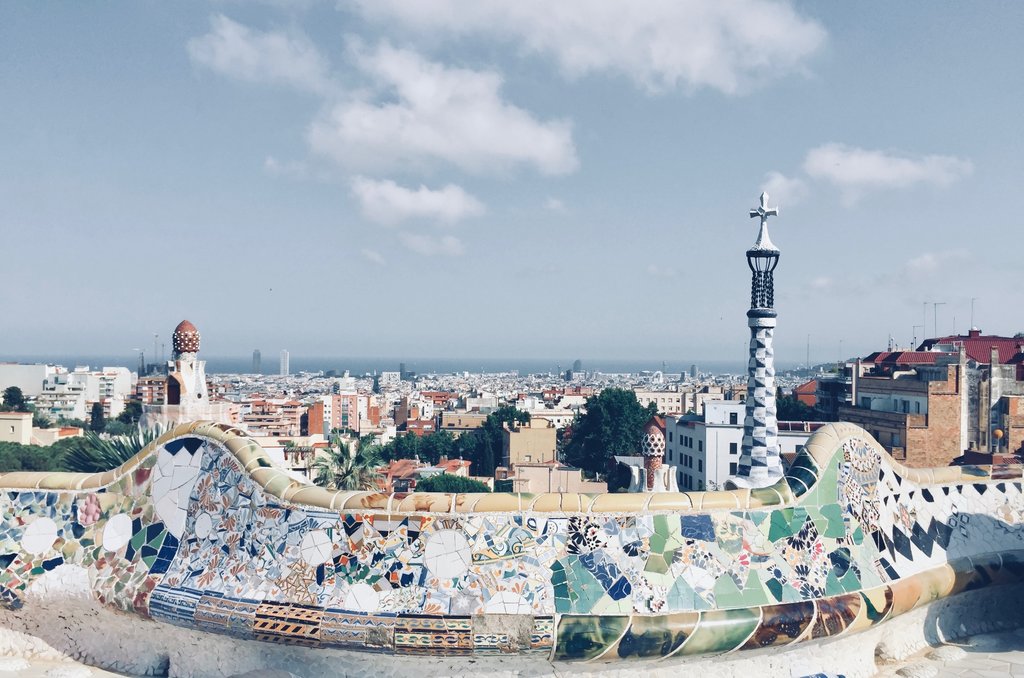The Complete Guide to Barcelona’s Parc Güell
“Park Güell is a masterpiece by renowned architect Antoni Gaudi that was originally intended as a gated community for aristocracy. It’s now a public park in Barcelona and municipal garden that’s a must-visit on a trip to the city.
Here’s the complete guide to visiting Park Güell to ensure you get the most out of the experience.

Park Güell history
——————
Park Güell is a UNESCO World Heritage Site and one of the notable works from architect Antoni Gaudi. The park was intended as a housing community for aristocracy and both Gaudi and the entrepreneur Eusebi Güell designed the space.
Farmland was purchased to be converted into the community and the plan included 60 townhouses, naturalist viaducts, a central square, a market area and elaborate landscaping. In 1914, only two of the homes were built and the project was shut down due to lack of funding and interest. Then, in 1922, the city bought the land and turned it into a public park and one of the most popular attractions.
Suggested itinerary
——————-
The park has plenty to see and do, including impressive works by Gaudi. He was inspired by the theatres of ancient Greece and wanted to create a similar design in the park.
Plaça de la Natura is one of the highlights, which is the Nature Square that’s hosted many festivals and events over the years. The square is constructed into the hillside and stretches out into the sea for a dramatic look.
Serpentine Bench is another highlight. The bench was designed to evoke the shape of a swimming sea serpent, and the curves of its body create seating areas. It’s widely regarded as one of the earliest works of surrealism in the architectural movement. The bench is covered with tile mosaics that resemble scales and create an iridescent effect.
The Trencadis mosaic is a must-see as well. It was created by Gaudi and Josep Maria Jujol using discarded tile pieces, buttons, shells, glass and china that were combined to create unique images and patterns that give new life to old materials.

The Laundry Room Portico is another example of Gaudi’s legendary creativity. The portico can be reached by a staircase and has elaborate passageways that were intended to connect the community homes. The passageways are hidden by the hills in the park. The Washerwoman portico is another must-see, which is a statue of a woman with a laundry basket on her head that’s reminiscent of the women in ancient Greek temples.
You should also visit Casa Larrad, a former family residence of the Güell family that’s now a school. The building was a lavish mansion that was renovated, but you can still see stunning hints of the original Spanish architecture and the bright colours and intricate brickwork designs.
The Lodges are located on either side of the entrance. These buildings’ designs were inspired by fairytale homes in Hansel and Gretel, so Gaudi designed them to look like a gingerbread house with icing and candy decorations.
You should also see the Escalera Monumental, or Dragon Staircase, a spectacular set of staircases that lead to the Hypostyle Room. The staircases have more intricate tile work, layered fountains, sculptures and other gorgeous adornments.
Park access
———–
Park Güell is located away from the city centre and you can reach it via the Metro Green Line L3 to Vallarta Station. From there, it’s a short walk up a hill to the entrance. If you or your travelling companions have mobility issues, there’s an escalator at this entrance to help with the ascent up the hill. Bus Turistica and bus 24 or 32 also make stops, but you must have a pass and there’s a limited schedule.
There are two additional entrances to the park, Carrer d’Olot, which has an iconic view, and Plaça de la Natura, a less-crowded entrance with the stunning Nature Square area.

How to get tickets and when to go
———————————
Park Güell is among the most popular attractions in the city, so it’s important to get tickets in advance to be sure you can visit. You can buy tickets online and up to 3 months in advance. The park is free to visit on Sundays and holidays, but you’re more likely to experience crowds and long queues. The Gaudi House Museum has a separate entrance fee that’s not included in the cost of your ticket, so be sure to bring cash.
Tickets have admission times and you have a 30-minute window to enter the park. To ensure you’re allowed to enter, it’s best to arrive early to combat the long lines that could delay you.
From January to March, the park is open from 10 a.m. to 6 p.m. In April, the park is open from 10 a.m. to 8 p.m. From May to September, the park is open from 10 a.m. to 9 p.m. In November, the park is open from 10 a.m. to 7 p.m., and in December, the park is open from 10 a.m. to 6 p.m.
Like the other attractions, the park is less crowded during the off-season, but if you’re travelling during peak season, you can still enjoy a morning in the park before the crowds arrive. This is also a good time to avoid the heat and see a stunning, colourful sunrise.
If you prefer, you can book a professionally guided walking tour of the park with an expert guide. This tour will take you to the most fascinating parts of the park while the guide offers historic information and insights into the attractions.
If you’re planning a trip to Barcelona, this guide provides all the information you need for a fun experience in Parc Güell. To prepare for your holiday, check out Expedia to get great deals on Barcelona holidays and plan your itinerary!”
More Articles With Art
Discover the very best museums and galleries through virtual tours. From London to New York, explore these online museums without leaving your home!
Find everything you need for a fun visit to the York Art Gallery with this comprehensive visitor’s guide.
Discover the top art galleries in London to experience some history and culture on your holiday.
Discover the top art galleries in Manchester to experience culture and history on your next holiday.
Visiting the spas and Georgian buildings of Bath? Check out our visitor’s guide to the Fashion Museum.